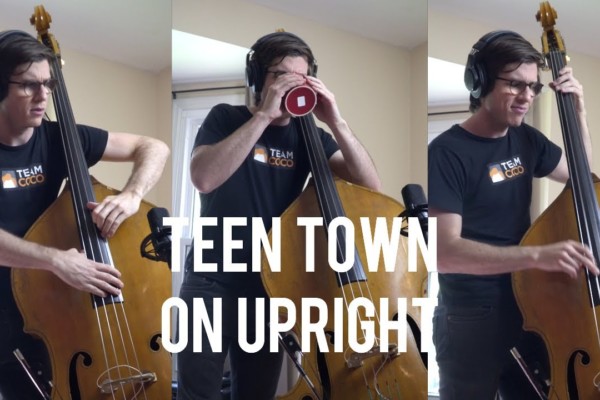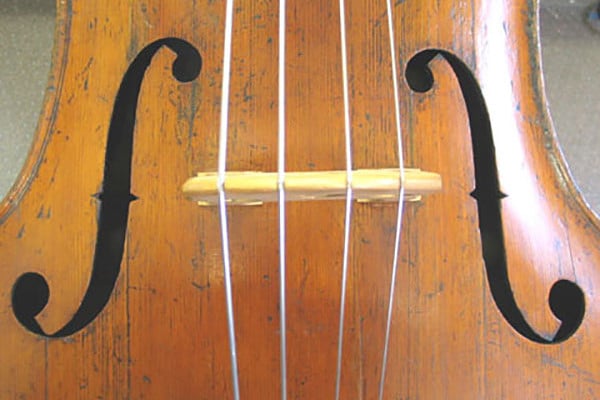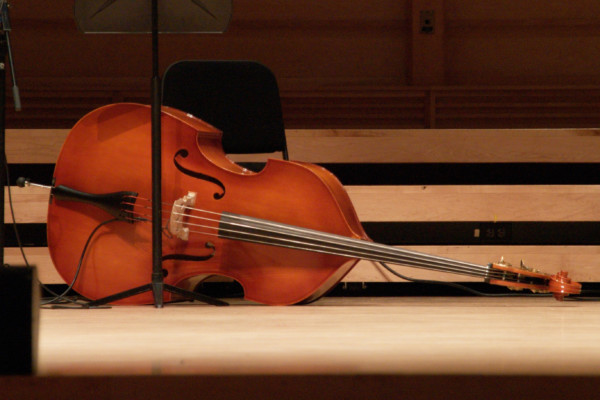Upright Bass Set Up for Playability and Sound – Part 2
This is part 2 of this series by Dr. D. Check out Part 1.
Set Up for Sound
In terms of sound, there are any number of things that can affect the volume, sustain and tone of your instrument. The bottom line is that everything you do to the instrument matters. Strings matter. Tailpiece length matters. Tailpiece weight matters. Tailpiece material matters. Tailpiece cord length (and material) matters. Bridge height matters. Everything matters. It’s simply a question of degree. A few of the major components in this of the tone equation, however, are the sound post, the bridge and the tension on the bass (via the strings).
Sound Post
The sound post is the wooden cylinder inside the instrument that is parallel to the floor when the bass is in a standing position. If the sound post is too tight, too loose, doesn’t fit flush against the top and back, or is not at right angle to the bass back and top, it will have a detrimental effect on the sound. Even if your sound post is fit well, simply moving it a centimeter up, down, left or right can change the tone of a bass, not to mention how it responds to your playing.
With some small amount of training and the proper tools you can do this yourself, but I wouldn’t suggest it. Go to a professional luthier who specializes in bass. This is true for all issues of setup. A good luthier can seem like a magician, so find a good one and trust them. It might cost a few dollars in the short term, but you won’t make any expensive mistakes and, because of their knowledge, they will get the job done much quicker than you will through experimentation. Ask some local pros or your teacher where they get their basses worked on. Likely a few names will keep coming up. You should go to one of them.
Bridge
Presuming that your bridge is the correct size for your instrument (not always a guarantee when you buy a new bass, I’m afraid) the biggest things you are looking at is the contact points where the bridge meets the body of the bass. The two sections of the bridge that contact the body of the bass (the “top) are called the “feet.” Unless you have an extremely odd instrument, the center of these feet should be more or less centered with the notches of the f-holes. Imagine drawing an imaginary line from the center of each foot to the corresponding notch. They should also be parallel to each other and fit flush against the top. You should NOT be able to slide a piece of paper or other item between the foot of the bridge and the top of the bass. This indicates poor contact, which adversely effects tone and volume. Again, don’t try and fix this yourself. Go to a pro.
String Tension
Our final item for today is the tension of the strings. Notice this affects both sound and playability. You will feel this tension with your left hand when you stop a string, of course, but it is also felt by the bass on it’s top. For optimum sound you are trying to find the perfect tension for your particular bass. Every bass is as individual as a human being and it is not as simple as “More tension = louder and brighter, Less tension = softer and darker,” although this may indeed be the case. Since it also affects playability, some players compromise in one direction or the other. It’s your call. If you are committed, however, you can find a tension that is ideal for both the left hand and the tone of the bass.
Some tension is good, of course, as without it the bridge and sound post would fall down. So, too little tension is bad. However, so is too much tension. Excess tension cannot only choke the sound of the bass but cause indentations or even cracks in the top over time. There’s a sweet spot for each bass, our quest is to find it.
You can place more or less tension on the bass by raising or lowering the bridge height. If you have an adjustable bridge it is simply a matter of a few turns. If not, you need an entirely new bridge fit to your instrument each time you experiment. Different strings also produce different tensions, so a new set of strings can change more than just the timbre of the instrument. The tension can also be reduced through the introduction of a larger saddle. The saddle is the piece of wood (usually ebony) between the tailpiece wire and the top of the bass. When I converted my bass from a 4 string to a 5 string I had a saddle installed to compensate for the added tension from the fifth string.
It’s a balancing act and it could take months or years to find the perfect setup for your bass. When you find “the one” though, it’s worth it. It’s so worth it.
Dr. Donovan Stokes is on the faculty of Shenandoah University-Conservatory. Visit him online at www.donovanstokes.com and check out the Bass Coalition at www.basscoalition.com.




[…] plays the iconic riff to “Under Pressure” with David Bowie at Madison Square Garden in 1997.9. Upright Bass Set Up for Playability and Sound – Part 2This is part 2 of this series by Dr. D. Check out Part 1. Set Up for Sound In terms of sound, there […]
All you are saying for the sound post and bridge setup is ‘It’s too difficult, go to a pro don’t do it yourself.’ so your article is a waste of time. Part of the joy of getting your sound right for yourself is to do it yourself, learning along the way to find your sound despite the difficulties. I say do the research, take advice, do it yourself and only go to a pro if you can’t get it right yourself.,
Yahoo! My first Kay, 1951, sat in a garage in California for 30 years. (long story) After I brought it home, I took it to our best bass guy in town. He encouraged me to get some glue, clamps a good book and put it together. (it had basically fallen apart in the garage it was stored in) With help from the guys at Golihurs and a lot of reading and patience, the only thing I had done was having the finger board planed. It sounds great, plays great and is a part of me. I agree. Do it yourself.
You can learn so very much by doing things yourself. Even when mistakes are made you are learning. With your Kay you had everything to gain and not too much to lose. Good for you.
I still have my Kay C-1 that I bought used in 1961. I can’t consider selling it because all I’d have then is money. Can’t put a price on an old “friend”.
Where do you set the sound post in relation to the bridge? Should it be directly under the bridge or does it matter?
Very informative. Some of my thoughts were confirmed and I gathered some new information. But finding a good luthier who really understands the bass is going to be a difficult task in some parts of the country. Just like in the rest of our lives we’ll have to do the best we can do.